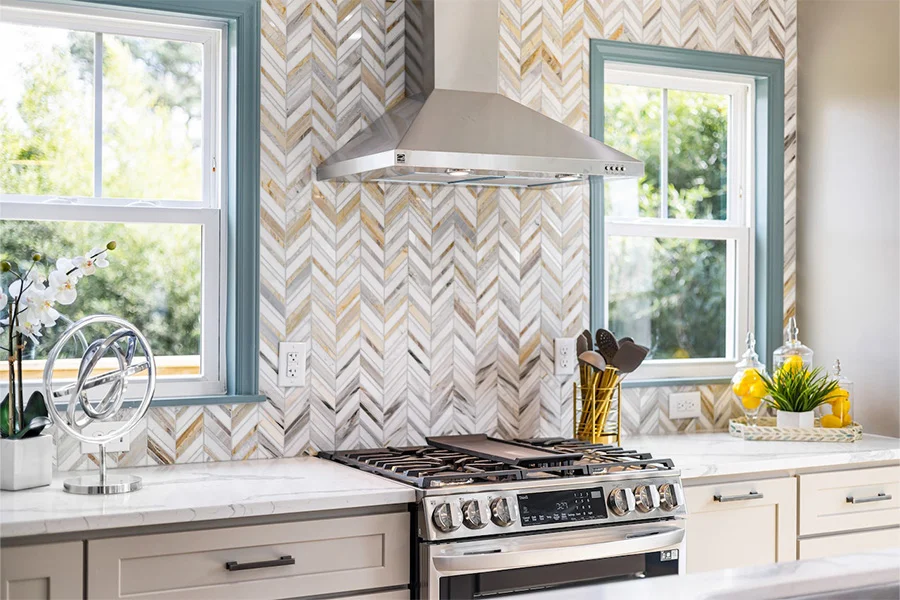The Importance of an Ergonomic Kitchen
A well-designed kitchen can make all the difference when it comes to enjoying the time you spend in it. A kitchen that is both functional and aesthetically pleasing can greatly enhance your cooking experience. That’s where the concept of an ergonomic kitchen comes in. An ergonomic kitchen is designed with the user’s comfort, efficiency, and safety in mind. In this article, we’ll explore 15 ways to design an ergonomic kitchen that is both practical and visually stunning.
1. Optimize Kitchen Layout for Workflow
One of the key principles of ergonomic design is the efficient use of space. To ensure that your kitchen is designed for maximum efficiency, consider the “kitchen work triangle” concept. This involves placing the three main work areas (sink, stove, and refrigerator) in a triangular arrangement, allowing for easy access and movement between them.
2. Install Adjustable Countertops
Countertop height can have a significant impact on your comfort while working in the kitchen. Adjustable countertops allow you to customize the height to your preference, reducing strain on your back and neck.
3. Choose the Right Flooring
Comfortable and slip-resistant flooring is essential for an ergonomic kitchen. Options such as cork or rubber can provide cushioning and reduce fatigue when standing for long periods.
4. Incorporate Accessible Storage Solutions
In an ergonomic kitchen, frequently used items should be easily accessible. Consider installing pull-out shelves, rotating cabinets, or even vertical storage solutions to make the most of your space.
5. Opt for Easy-to-Clean Surfaces
Easier cleaning means less time spent on maintenance. Choose materials such as stainless steel, glass, or sealed wood that are easy to clean and maintain.
6. Prioritize Proper Lighting
Ensure that your kitchen is well-lit with natural light, as well as task lighting for specific work areas. This will help reduce eye strain and enhance overall visibility.
7. Select User-Friendly Appliances
Choose appliances that are designed with user comfort and ease of use in mind. Look for features such as easy-to-read controls, comfortable handles, and quiet operation.
8. Incorporate Rounded Edges
Rounded edges on countertops and cabinets can help prevent accidents and injuries by minimizing sharp corners.
9. Utilize Wall Space
Maximize your kitchen’s vertical space by installing wall-mounted storage solutions, like magnetic knife strips or hanging pot racks.
10. Opt for Comfortable Seating
Choose seating options that offer adequate back support and cushioning, ensuring that you and your guests are comfortable while enjoying your culinary creations.
11. Implement Anti-Fatigue Mats
Anti-fatigue mats can provide added comfort and support while standing for extended periods, reducing strain on your legs and feet.
12. Consider Universal Design Principles
Design your kitchen with accessibility in mind, making it usable by people of all ages and abilities.
13. Allow for Adequate Ventilation
Proper ventilation can help eliminate odors, reduce humidity, and improve indoor air quality, creating a more comfortable and healthy environment.
14. Plan for Sufficient Electrical Outlets
Make sure you have enough electrical outlets for all your appliances and devices, and place them in convenient locations to minimize the need for extension cords.
15. Customize Your Kitchen to Suit Your Needs
Ultimately, the best ergonomic kitchen is one that meets your unique needs and preferences. Tailor your design to suit your lifestyle and personal requirements.
Designing an ergonomic kitchen is all about creating a space that is both functional and comfortable. By following these 15 tips, you can create a kitchen that not only looks great but also enhances your cooking experience, allowing you to enjoy your time spent in the heart of your home. Prioritizing user comfort and efficiency will result in a kitchen that is a pleasure to work in, making meal preparation and entertaining a breeze.
FAQ’s
Q1: What is an ergonomic kitchen?
An ergonomic kitchen is designed with the user’s comfort, efficiency, and safety in mind, ensuring a more enjoyable and productive cooking experience.
Q2: What is the “kitchen work triangle”?
The kitchen work triangle is a concept that involves placing the three main work areas (sink, stove, and refrigerator) in a triangular arrangement, allowing for easy access and movement between them.
Q3: What are some key features of an ergonomic kitchen?
Key features of an ergonomic kitchen include optimized layout, adjustable countertops, accessible storage solutions, proper lighting, comfortable seating, and user-friendly appliances.
Q4: How can I make my kitchen more accessible?
Implementing universal design principles, such as installing adjustable countertops, incorporating accessible storage solutions, and selecting user-friendly appliances, can make your kitchen more accessible for people of all ages and abilities.
Q5: What type of flooring is best for an ergonomic kitchen?
Comfortable and slip-resistant flooring options, such as cork or rubber, are ideal for an ergonomic kitchen as they provide cushioning and reduce fatigue when standing for long periods.

